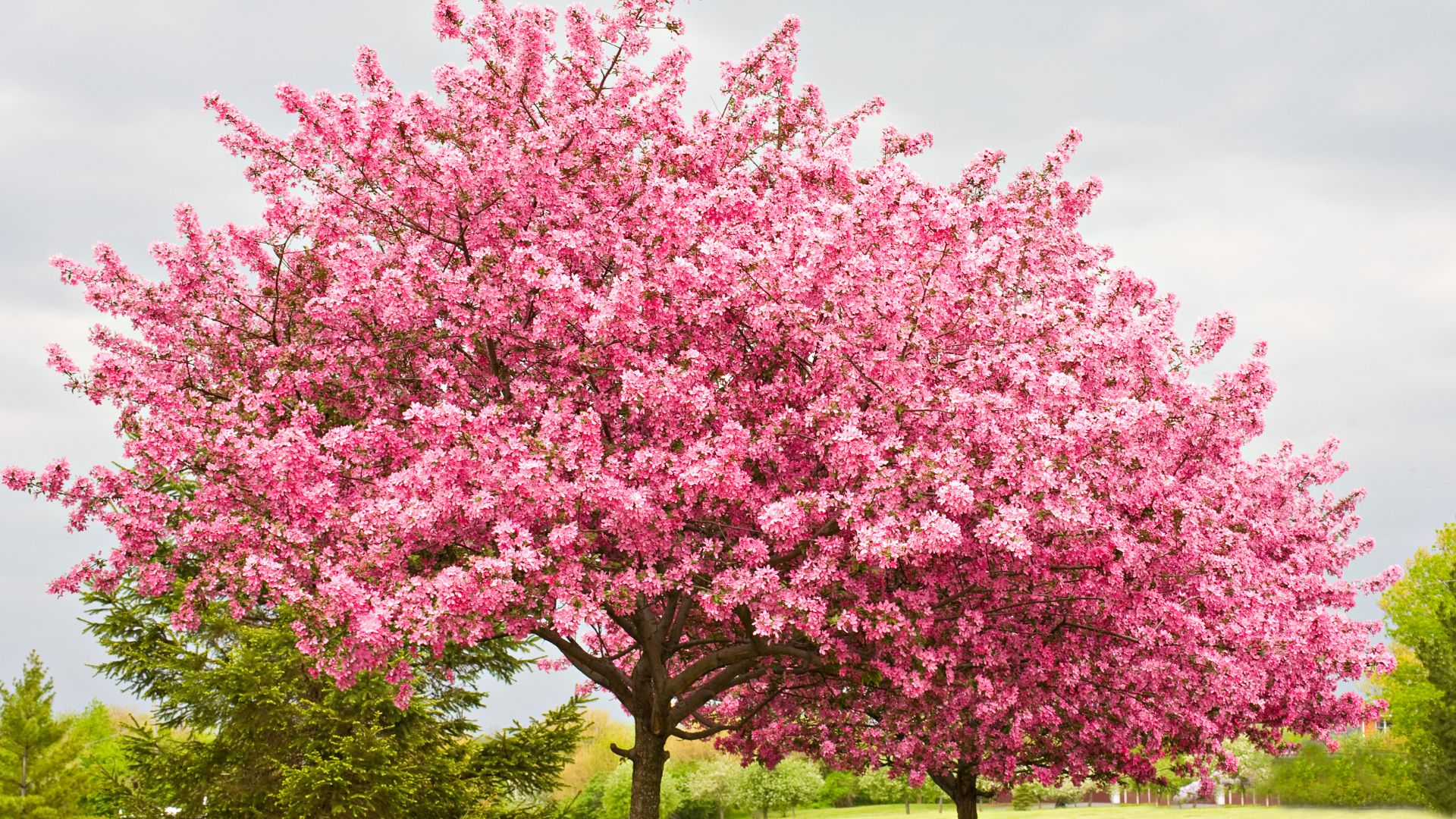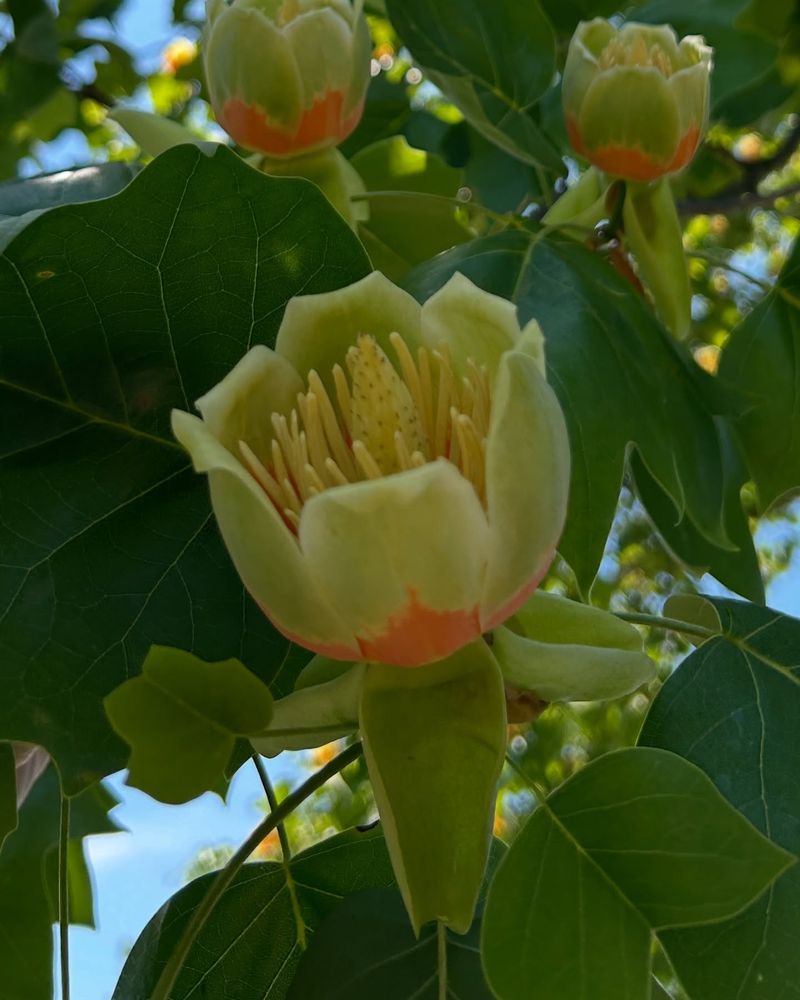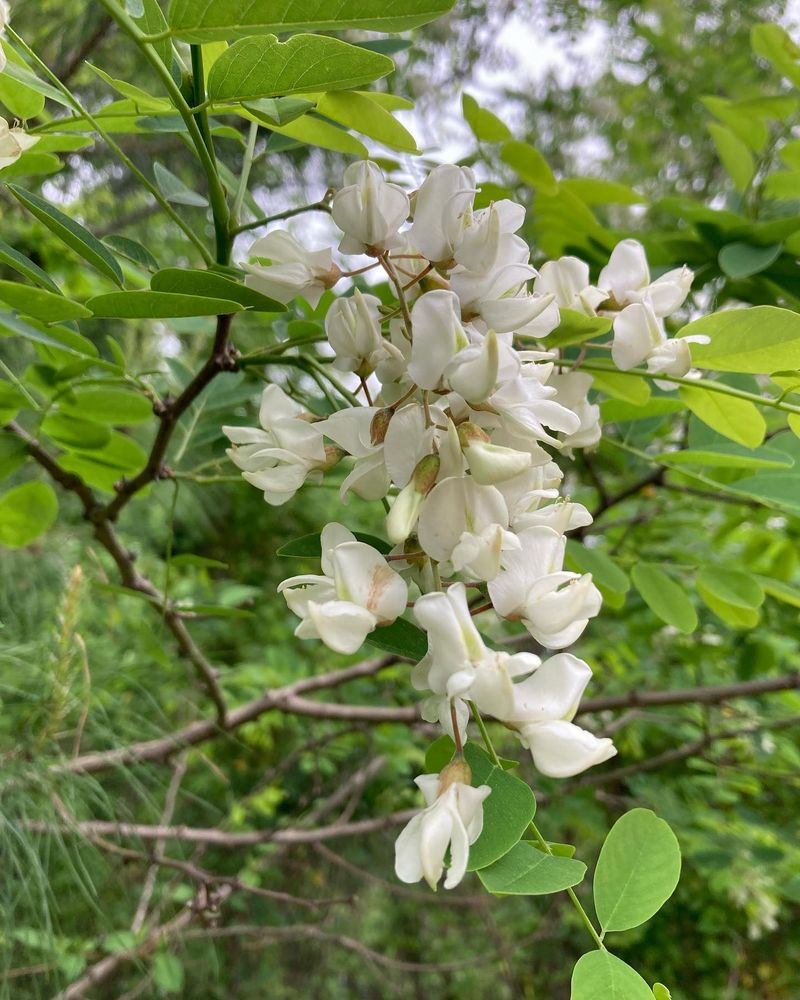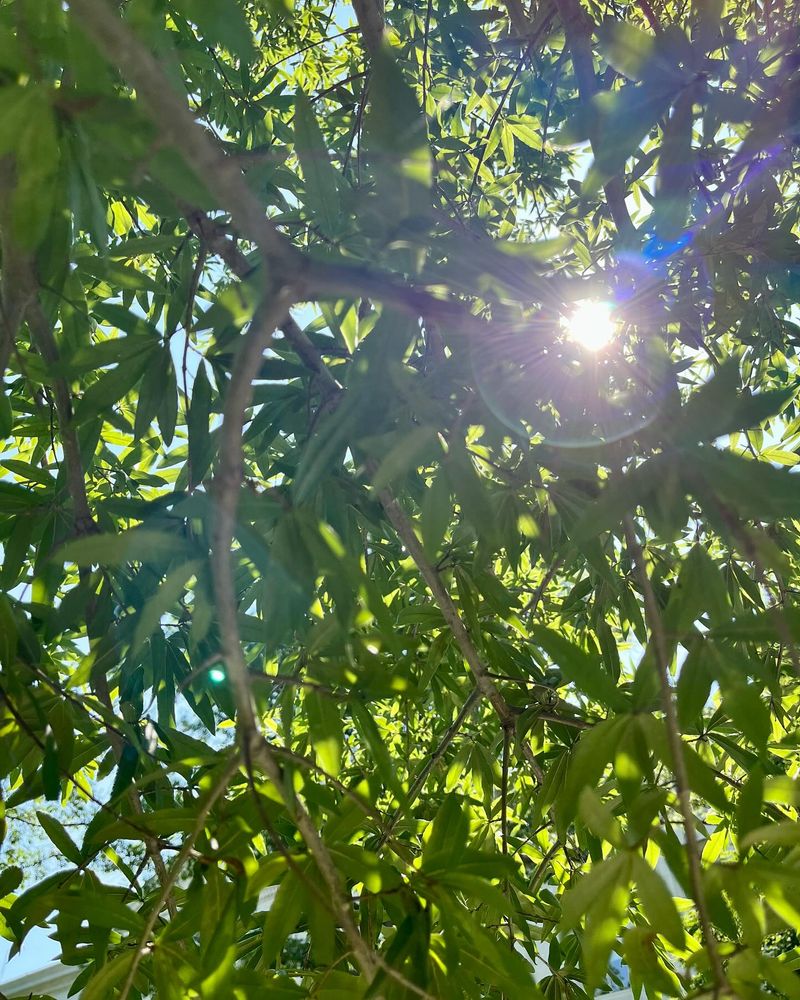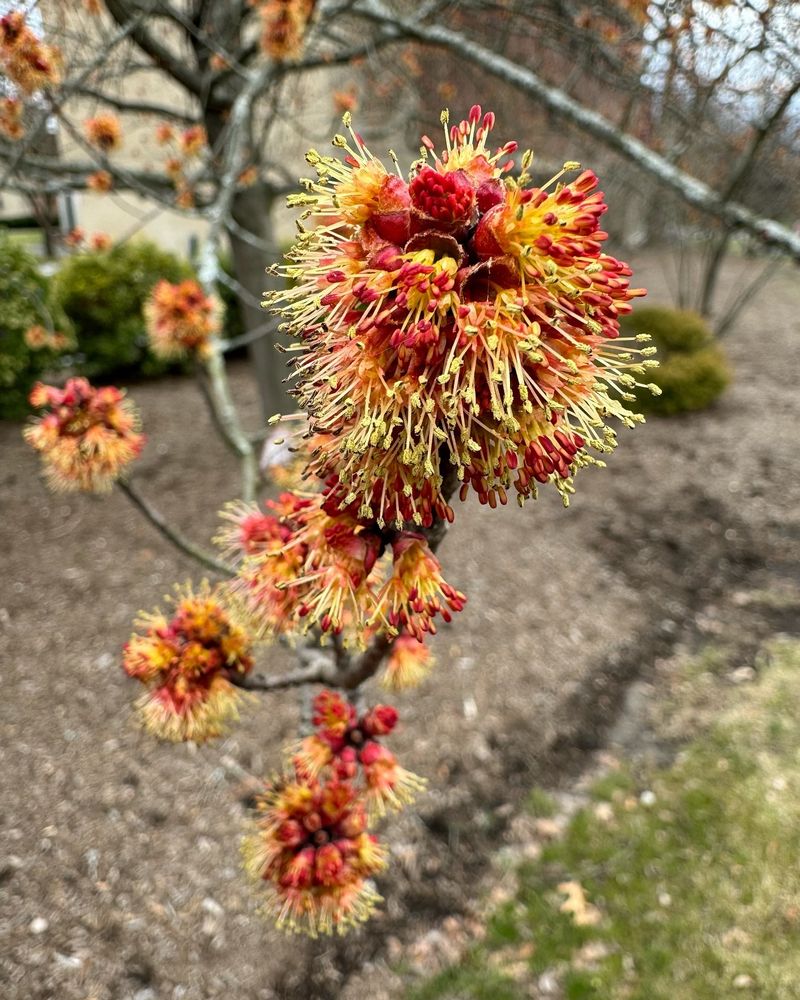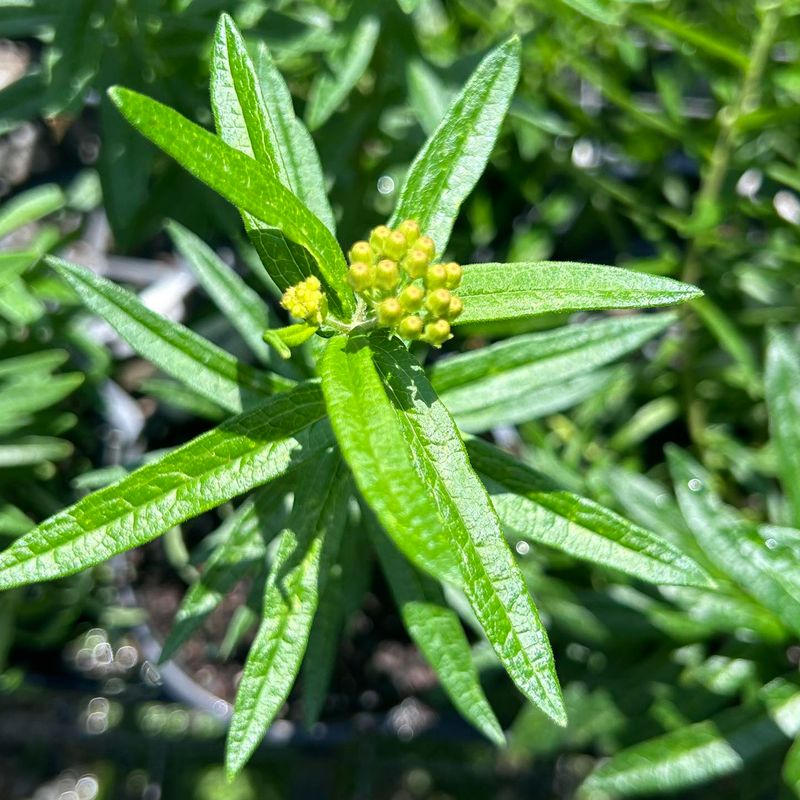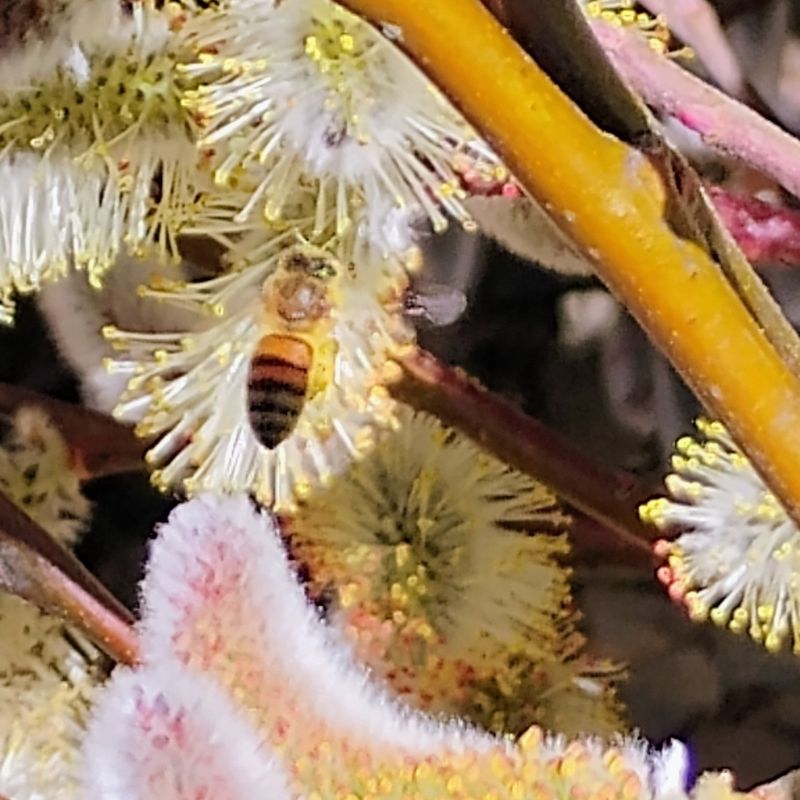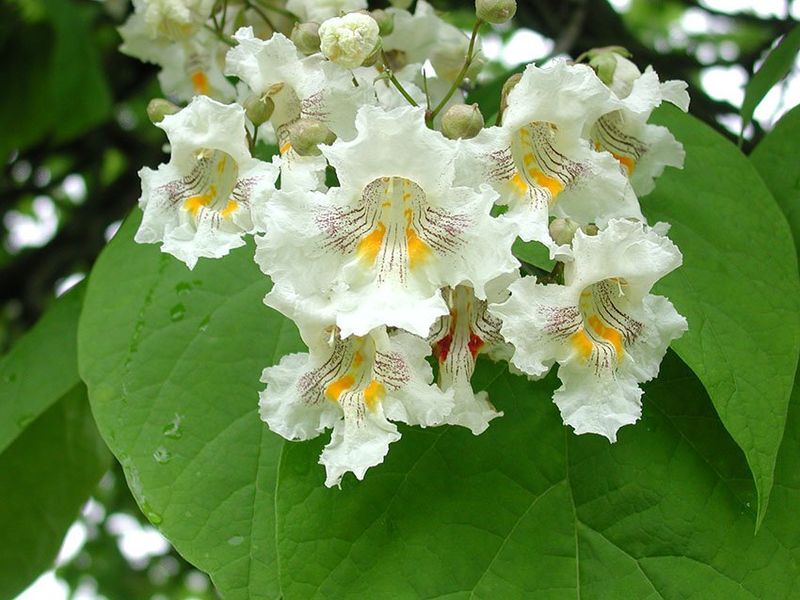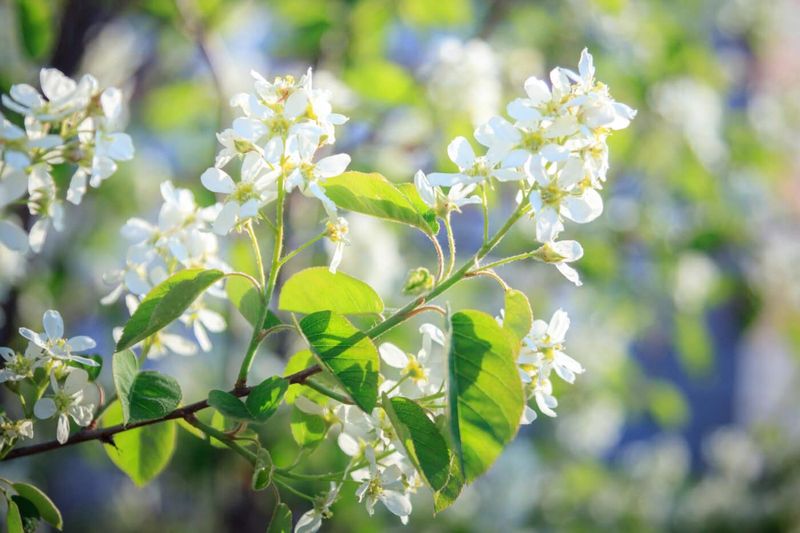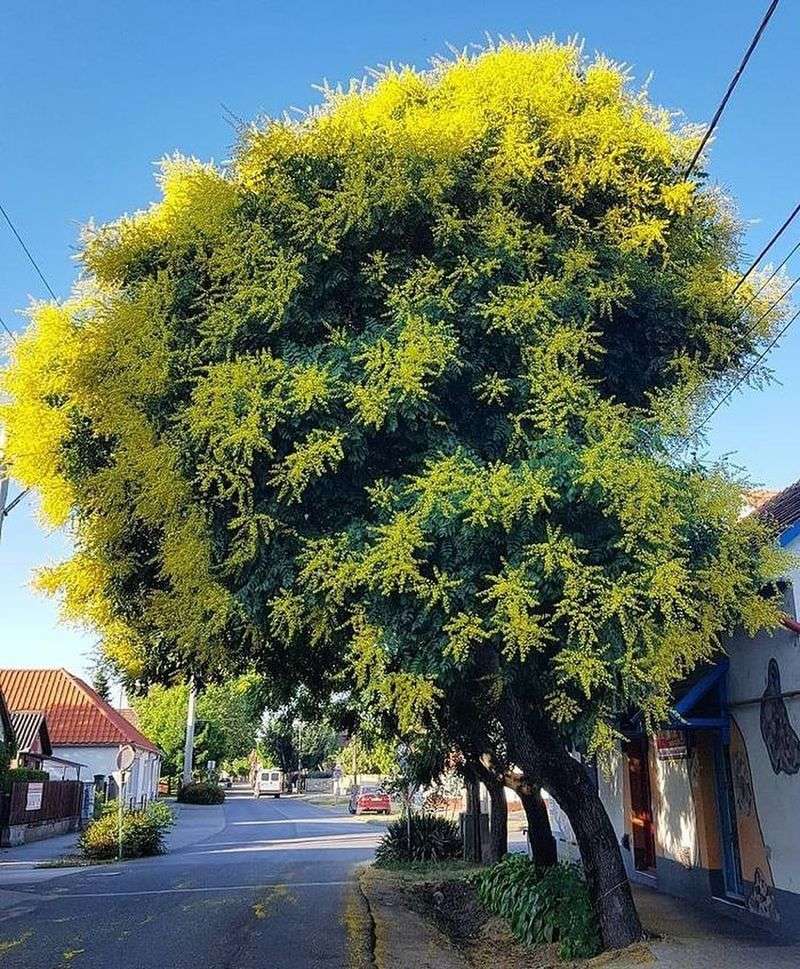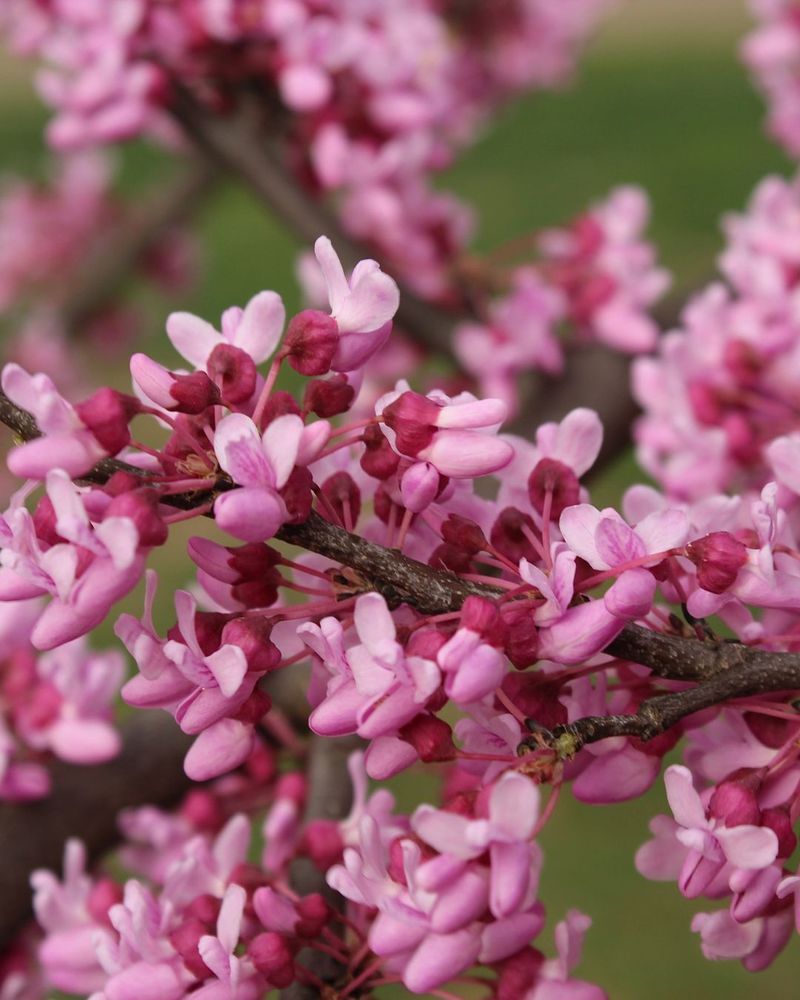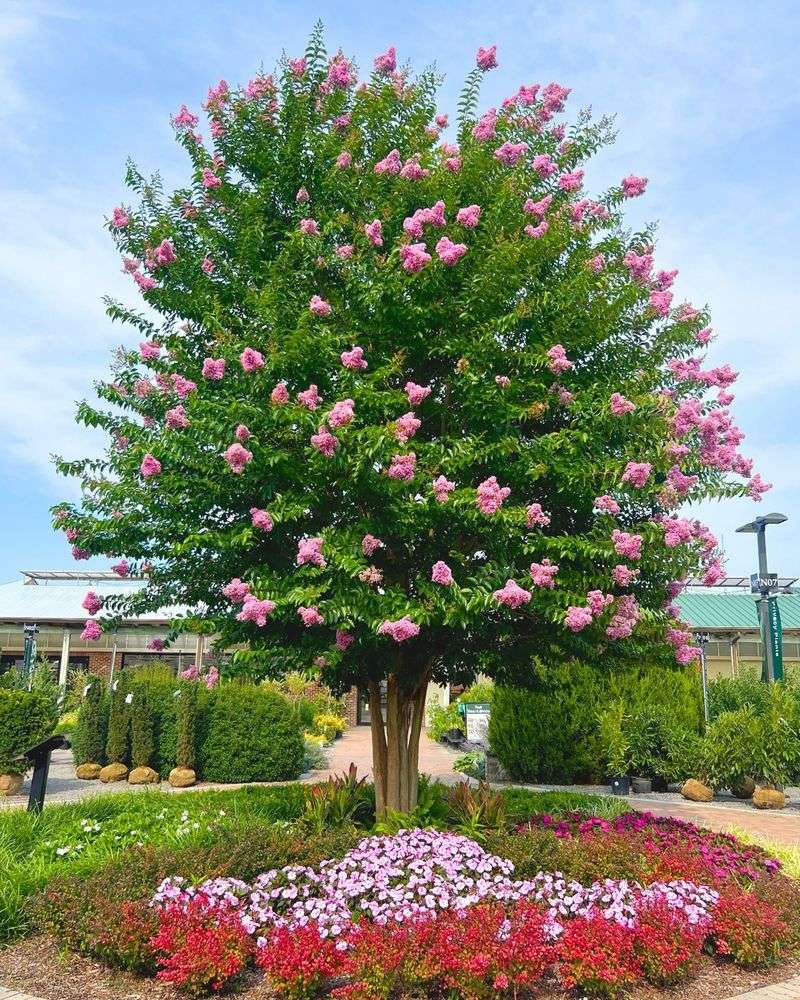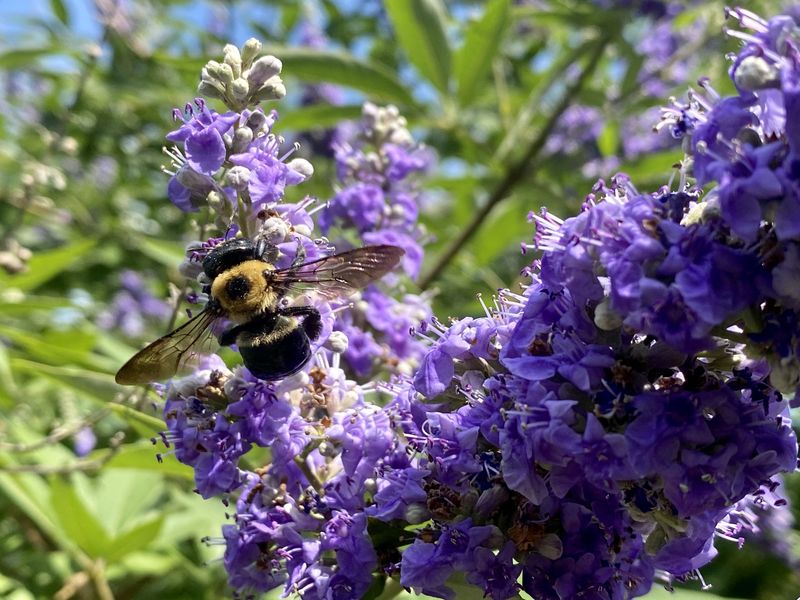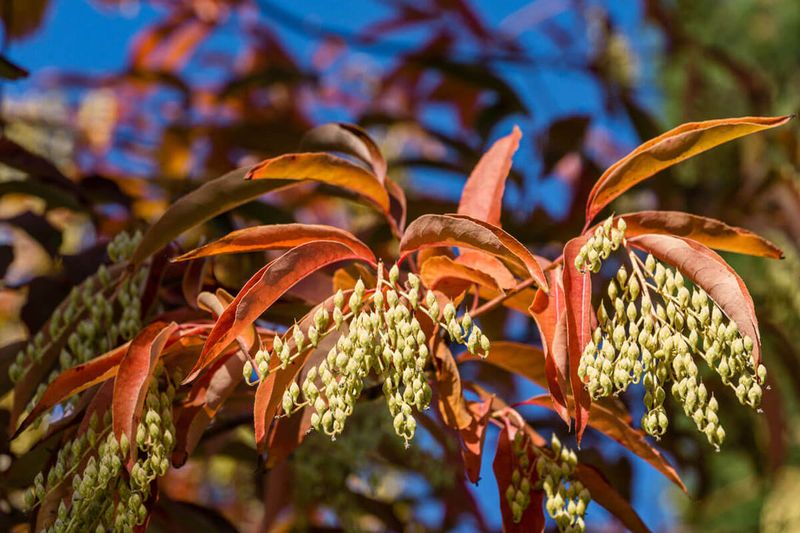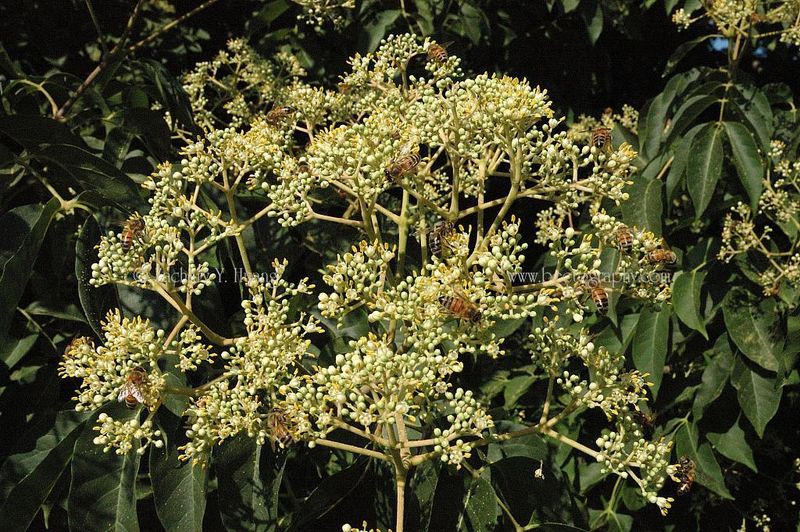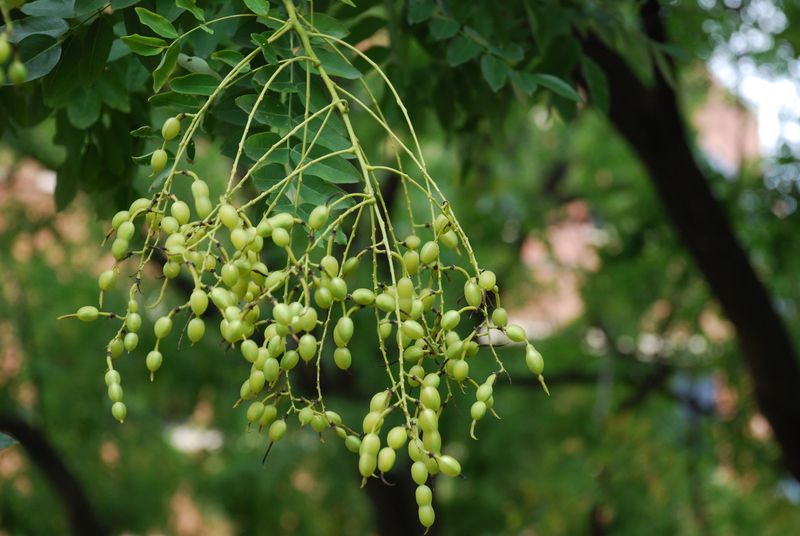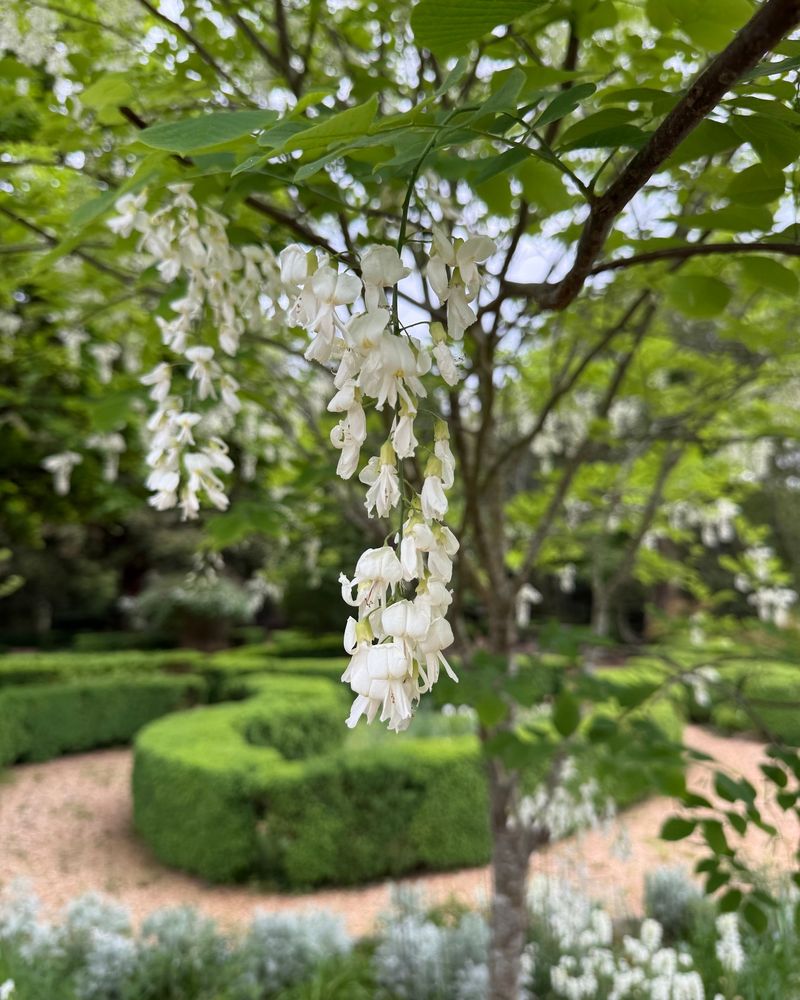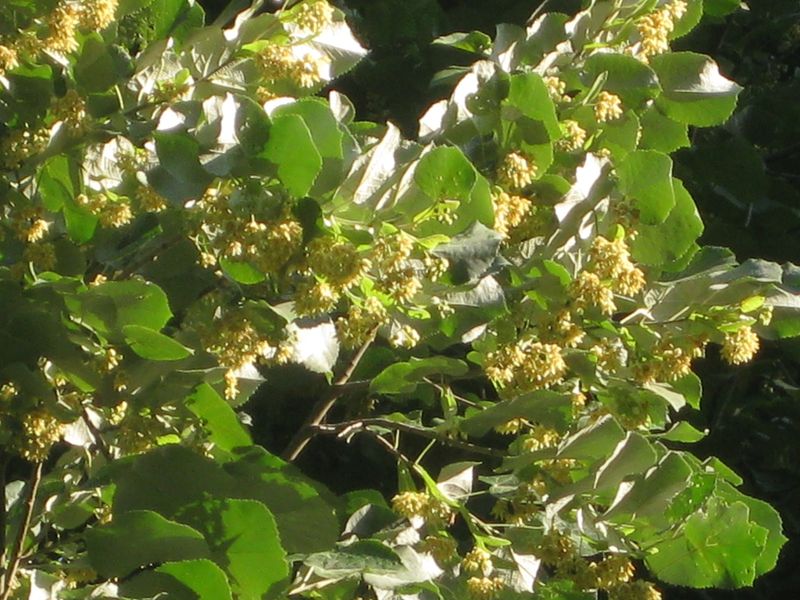Watching my backyard go from bare soil to a buzzing little habitat has been such a rewarding part of homeownership. Planting trees that attract pollinators was the first step. Now I wake up to bees humming in the branches—nature’s version of a morning alarm.
Fast-growing trees are a landscaper’s secret weapon. They bring privacy, shade, and beauty in just a few seasons. My tulip poplar shot up faster than I ever expected—already taller than the house! Even better, these trees help pollinators when they need it most.
Butterflies, hummingbirds, and bees all stop by now, and neighbors have noticed more wildlife too. It’s a small change that makes a big impact.
1. Tulip Poplar
Growing up to 6 feet per year in ideal conditions, this native giant quickly reaches impressive heights. The distinctive tulip-shaped flowers appear in late spring, providing abundant nectar that honeybees find irresistible.
Yellow-green blooms might be missed by humans since they often appear high in the canopy, but pollinators have no trouble finding them. The tall, straight trunk develops a striking orange-yellow fall color.
Consider the space carefully before planting – mature heights easily reach 70-90 feet. In my yard, I’ve watched honeybees make beelines straight to its branches every May without fail.
2. Black Locust
Hanging clusters of fragrant white flowers transform this fast-growing native into a pollinator paradise each spring. Bees become so abundant during bloom time that the entire tree seems to vibrate with their activity.
Growth rates of 3-4 feet annually make this an excellent choice for quick shade or windbreaks. The deeply furrowed bark adds winter interest when the tree stands bare.
Despite its thorny branches, black locust offers exceptional drought tolerance once established. I’ve noticed that even in the driest summers, mine continues to thrive without supplemental watering.
3. Willow Oak
Unlike its slow-growing oak cousins, the willow oak rockets skyward at 2-3 feet per year while maintaining an elegant, columnar shape. Small acorns produced abundantly each fall attract wildlife while requiring minimal cleanup compared to larger oak varieties.
Spring catkins might seem insignificant but provide critical early-season pollen when bees are just emerging from winter. The narrow, willow-like leaves create dappled shade perfect for understory plants.
My specimen has doubled in size in just four years, already providing meaningful shade for my patio during summer afternoons.
4. Red Maple
Early spring brings a crimson haze to this popular native as tiny red flowers emerge before the leaves unfurl. These early blooms provide crucial nectar and pollen when few other sources are available to hungry pollinators just waking from winter.
Adding 2-3 feet of height annually, red maples quickly establish themselves as landscape anchors. Their brilliant fall display ranges from yellow to deep scarlet depending on the specific variety and growing conditions.
Few trees match the four-season appeal of red maples, from spring flowers to summer shade to fall color to interesting winter bark patterns.
5. American Basswood
Heavenly fragrance wafts from pendulous yellow-white flower clusters in early summer, attracting bees from miles around. Beekeepers prize basswood honey for its distinctive light color and delicate flavor.
Growing at a steady 2 feet per year, this native develops a dense, oval crown that provides excellent shade. Large heart-shaped leaves create a tropical feel in northern landscapes.
Watching bees work basswood flowers offers a fascinating glimpse into pollination – they become so focused on the nectar-rich blooms that they barely notice human observers standing just feet away.
6. Pussy Willow
Fuzzy silver catkins emerge in late winter, signaling spring’s approach and offering the earliest pollen source for native bees. These soft, touchable blooms transform into either male pollen-bearing flowers or female seed-producing ones as the season progresses.
Multiple stems grow rapidly, adding 3-4 feet yearly until reaching 15-25 feet at maturity. The shrubby habit makes pussy willow perfect for rain gardens, wet areas, or as informal hedges.
Cutting branches when catkins first appear brings spring indoors weeks before other flowering plants wake up. Leave plenty on the plant, though – early pollinators depend on them!
7. Catalpa
Orchid-like white flowers with purple and yellow markings cover this fast-growing native in late spring, creating a spectacular display. Hummingbirds, bees, and butterflies flock to the showy blooms that resemble exotic tropical flowers.
Growing 3-4 feet annually, catalpas quickly become statement trees with their large, heart-shaped leaves that can reach dinner-plate size. Long seed pods follow the flowers, earning catalpa the nickname “cigar tree.”
My catalpa became a neighborhood conversation piece within just three years of planting. Now it draws both wildlife and admiring glances from passersby during its stunning bloom period.
8. Serviceberry
Delicate white star-shaped flowers blanket the branches in early spring, creating a cloud-like effect that draws in native bees and butterflies. The multi-stemmed growth habit adds 1-2 feet of height annually while maintaining a naturally attractive form.
Following the flowers, edible berries ripen from green to red to deep purple-blue in early summer. Both birds and humans compete for the sweet, blueberry-like fruits that make excellent jams and pies.
Fall brings fiery orange-red foliage that rivals any maple for autumn color. My serviceberry has become a four-season focal point that’s especially magical during its spring flowering period.
9. Golden Rain Tree
Panicles of bright yellow flowers create a stunning summer display unlike any other landscape tree. Bees buzz enthusiastically among the blossoms during July and August when many other trees have finished flowering.
Adding 1-2 feet of height yearly, this Asian native quickly develops a rounded, umbrella-like canopy perfect for patios and outdoor living spaces. Unusual papery seed capsules follow the flowers, resembling little Chinese lanterns that persist into winter.
Heat and drought tolerance make golden rain tree particularly valuable in challenging urban sites. Mine has thrived through several brutal summer heat waves without missing a beat.
10. Redbud
Magenta-pink flowers emerge directly from the bark in early spring, covering branches with color before leaves appear. Native bees rely heavily on redbud’s nectar-rich flowers as they emerge from winter dormancy.
Growing quickly to 15-20 feet, redbuds develop an artistic vase-shaped form with a spreading canopy. Heart-shaped leaves follow the flowers, eventually turning buttery yellow in fall.
Several cultivars offer options beyond the typical pink – look for ‘Alba’ (white flowers), ‘Forest Pansy’ (purple leaves), or ‘Rising Sun’ (gold-orange new growth). My ‘Ruby Falls’ weeping redbud creates a living sculpture that draws compliments year-round.
11. Crape Myrtle
Months of colorful blooms make crape myrtles pollinator magnets from summer through fall. Panicles of crinkled flowers in shades of white, pink, red, or purple attract butterflies, bees, and hummingbirds during the hottest months when many plants stop flowering.
Growing 3-5 feet annually when young, these multi-stemmed trees quickly reach their mature height of 15-25 feet. Exfoliating bark creates winter interest with cinnamon-colored inner layers revealed as outer bark peels away.
Newer varieties offer improved mildew resistance and cold hardiness. My ‘Natchez’ white crape myrtle grew from a 3-gallon pot to over 15 feet in just four years.
12. Seven-Son Flower
Clusters of fragrant white flowers appear in late summer when most trees have finished blooming for the season. Butterflies, particularly monarchs fueling up for migration, flock to the nectar-rich blossoms that appear at the branch tips.
Growing 2-3 feet annually, this multi-stemmed small tree quickly reaches its mature height of 15-20 feet. After flowering, the sepals turn bright cherry-red, creating the appearance of a second bloom period.
Cinnamon-colored exfoliating bark provides winter interest after leaves drop. Since adding mine to the garden five years ago, late summer butterfly activity has increased dramatically throughout my neighborhood.
13. Vitex
Spikes of lavender-blue flowers resemble butterfly bush blooms but grow on a fast-developing tree form. Butterflies, bees, and hummingbirds visit continuously during the long summer bloom period that can extend from June through September.
Adding 3-4 feet of growth annually when young, vitex quickly develops into a small multi-stemmed tree with aromatic gray-green foliage. The sage-like scent of the leaves adds sensory appeal beyond the visual beauty.
Exceptional heat and drought tolerance make this an ideal choice for challenging sites. My vitex has become the centerpiece of my pollinator garden, drawing in beneficial insects that help my vegetable garden thrive.
14. Sourwood
Cascades of white bell-shaped flowers dangle from the branches in mid-summer, resembling lily-of-the-valley blooms. Honeybees make some of their most prized honey from sourwood nectar, valued for its distinctive caramel-spice flavor.
Growing steadily at 1-2 feet per year, sourwood develops a pyramidal shape that becomes increasingly layered with age. Brilliant crimson fall color rivals any maple, persisting for weeks before leaves drop.
Native to eastern woodlands, sourwood adapts well to home landscapes with acidic soil. The summer flowers on my specimen create a magical effect as they seem to float against the dark green foliage.
15. Hawthorn
Clusters of white apple-like blossoms cover the branches in spring, attracting diverse native pollinators with their rich nectar. The flowers’ distinctive musky scent might not appeal to humans but proves irresistible to beneficial insects.
Growing 1-2 feet annually, hawthorns quickly develop their characteristic spreading, somewhat irregular form. Thorny branches provide nesting protection for birds, while bright red berries persist into winter, feeding wildlife after other food sources disappear.
Washington hawthorn has proven especially adaptable in my landscape, tolerating both wet springs and dry summers without complaint. Its four-season interest makes it worth the occasional thorn prick during pruning.
16. Bee Bee Tree
Massive clusters of tiny white flowers emerge in late summer, creating one of the most spectacular pollinator feeding frenzies you’ll ever witness. Honeybees gather in such numbers that their buzzing can be heard from several yards away.
Growing 2-3 feet yearly, this Asian native quickly develops a rounded crown atop a straight trunk. The late-season bloom period provides critical nectar when many other sources have finished flowering.
Also known as Korean evodia or tetradium, this uncommon tree deserves wider planting specifically for pollinator support. After adding one to my yard, I’ve noticed increased honeybee activity throughout the entire garden.
17. Japanese Pagoda Tree
Creamy white pea-like flowers appear in mid-summer panicles, drawing in bees and butterflies when many other trees have finished blooming. The slightly drooping flower clusters create a graceful effect against the compound leaves.
Adding 1-2 feet of height annually, this Asian native develops a broad, rounded crown that provides excellent shade. Interesting seed pods follow the flowers, persisting into winter and adding textural interest to the bare branches.
Remarkable urban tolerance makes this tree suitable for challenging sites with compacted soil or pollution. Mine has flourished along my driveway despite reflected heat from the pavement.
18. American Yellowwood
Wisteria-like clusters of fragrant white flowers dangle from the branches in late spring, creating a spectacular display every 2-3 years. During heavy bloom years, the entire tree appears covered in snow even from a distance.
Growing 1-2 feet yearly, yellowwood develops a rounded crown with smooth gray bark reminiscent of beech trees. Fall brings clear yellow foliage that glows in the autumn sunlight.
Despite being native to the southeastern United States, yellowwood remains uncommon in landscapes. My specimen has become a neighborhood conversation piece each time it puts on its dramatic flowering display.
19. Silver Linden
Intensely fragrant yellow-white flowers appear in early summer, filling the air with sweet honey scent that attracts bees from surprising distances. The flowers may go unnoticed by humans as they’re partially hidden by specialized leaf-like bracts.
Growing 2-3 feet annually, silver linden quickly develops a pyramidal shape that becomes more oval with age. The distinctive two-tone leaves flash silver undersides whenever breezes stir the foliage.
European lindens have been specifically planted near apiaries for centuries to produce prized honey. After adding one to my yard, I’ve noticed honeybees traveling straight up to its branches when in bloom.

